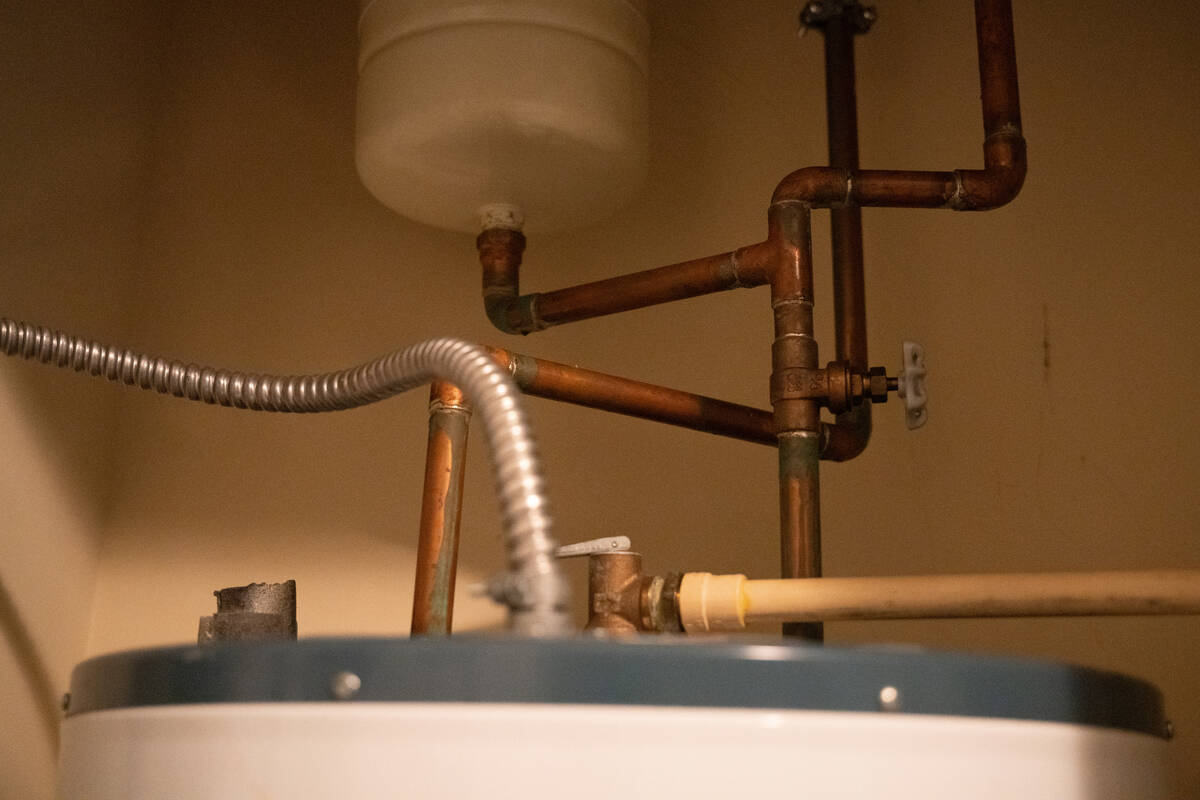Saving $4 on parts might lead to paying for new water heater
Q: My water heater has an enormous amount of corrosion around the nipples and my home warranty company said that this condition voids the warranty. The water heater isn’t leaking, but I’m concerned that it may start. What can I do to prevent a leak?
A: Although I can’t speak to the contract you have with your warranty company, I can tell you what has happened with your water heater. It’s called galvanic corrosion and it started at installation. Either the installer wanted to save a few dollars or was ignorant to how different metals react when water is introduced to them.
Galvanic corrosion is caused by two or more dissimilar metals coming into contact with — in your case — water. When this occurs, one of the metals becomes an anode and corrodes faster than it would all by itself, and the other metal becomes a cathode and corrodes slower than it would by itself. In this case, the copper supply line is the cathode and the galvanized nipple is the anode. The nipple corrodes and can result in a leak.
Your problem could have been prevented with the use of dielectric nipples. A dielectric nipple prevents the two dissimilar metals from contacting each other where water is present because the nipple is encased in plastic. The plastic is not only on the inside of the nipple but also extends past the end of the nipples. One of the side benefits of using dielectric nipples is that you seldom have leaks because the plastic ends act as washers and compress against the seat as the nipple is tightened.
Galvanized nipples cost about $1 each, whereas dielectric nipples are about $3 each (you will need two). So your installer saved about $4 and possibly has cost you a water heater. To replace the nipples, turn off the valve on top of the water heater. Attach a garden hose to the hose bib at the bottom of the water heater and open it to drain the water.
Now the fun begins. It is hard to tell what condition the nipples are in. They may appear to be strong, but they may only be as thin as tissue paper.
Spray the fittings and nipples with penetrating oil or WD-40. Use an open-end wrench or channel locks to unscrew the copper flex lines. Use a pipe wrench or the channel locks to unscrew the old nipples gently, so as not to crush them.
If the nipples have a lot of corrosion around them, they will probably be weak. The idea here is to get the nipples to turn without having them snap off inside the seat.
If a nipple does snap, the job will get longer by an hour or two. To remove the snapped nipple, use a hacksaw blade and cut vertically along the inside of the nipple. To do this, you will have to take the blade out of the hacksaw so that it will fit inside the nipple. Cut about halfway through the thickness of the nipple wall. Don’t cut all the way through or you will damage the threads that will hold the new nipple.
Use a caping chisel or a nailset and hit the nipple with a hammer at the point where you cut it to push the broken nipple inward. This will cause the nipple to collapse on itself and allow you to remove it with needle-nose pliers.
Clean the threads of the water heater with a wire brush to remove any corrosion. Wrap the dielectric nipples three times with Teflon tape and screw them in until they bottom out. Screw the copper flex lines back on.
Open the nearest hot water faucet to the water heater. Take the aerator off of the faucet and turn the water back on. By taking the aerator off, you will allow the debris that you knocked into the tank to drain out of the line. You may even want to refill the tank and then flush it out. The water heater will be full when water runs out of the faucet.
Mike Klimek is a licensed contractor and owner of Las Vegas Handyman. Send questions to handymanoflasvegas@msn.com or 4710 W. Dewey Drive, No. 100, Las Vegas, NV 89118. Visit handymanoflasvegas.com.
Do it yourself
Project: Water heater nipples
Cost: Under $10
Time: 1-2 hours
Difficulty: ★★★


















